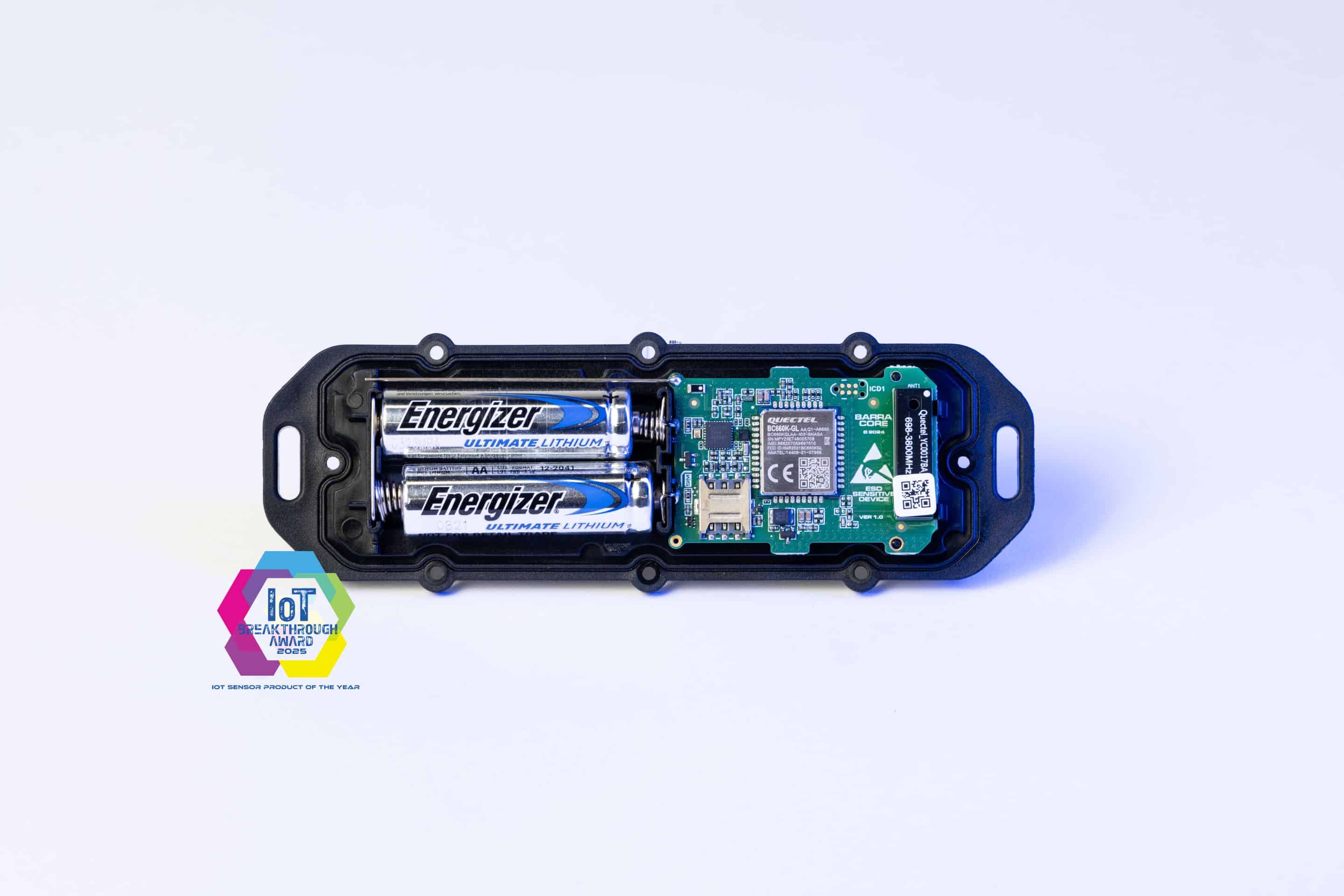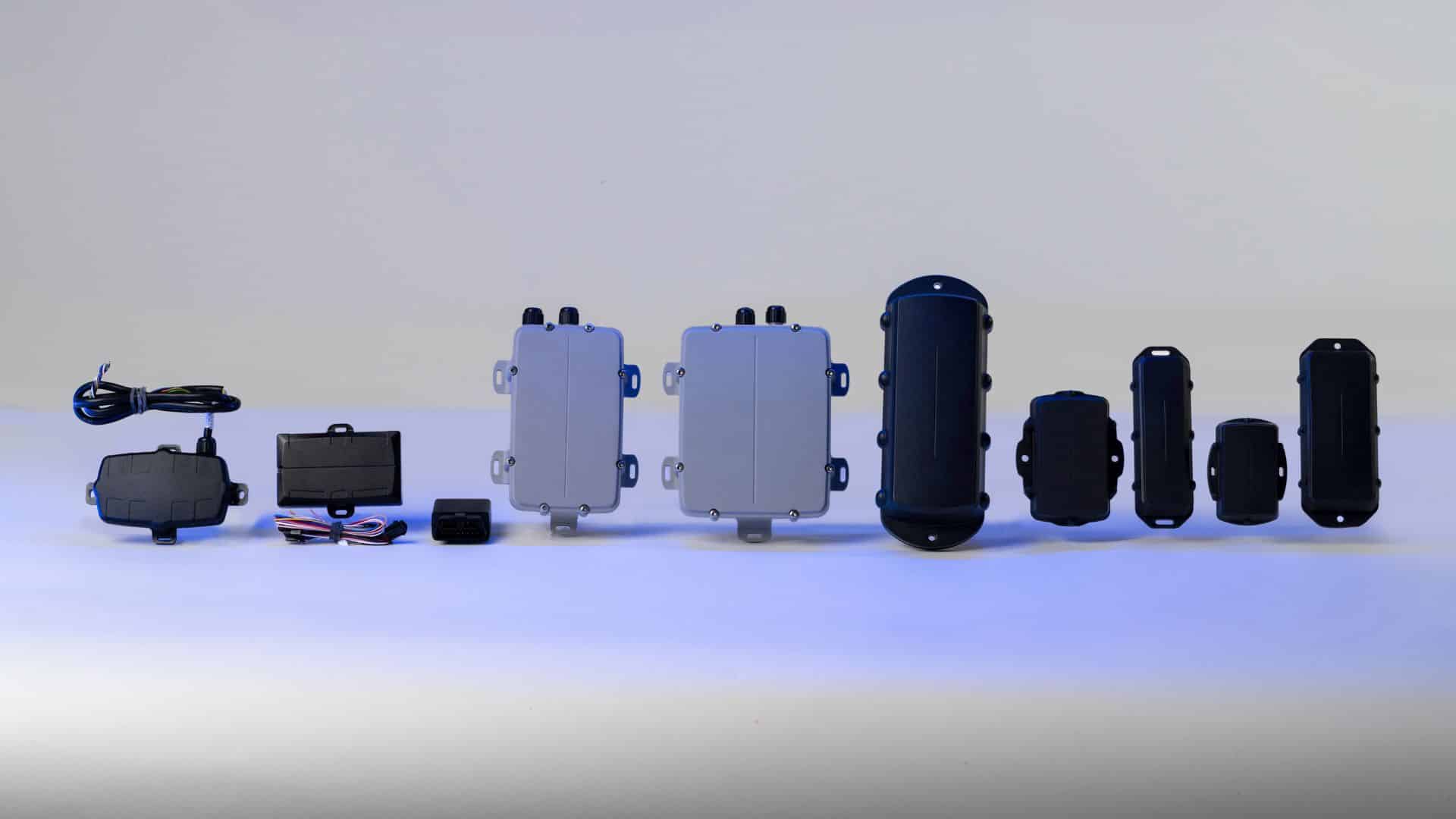Solar-Powered GPS Trackers vs Battery-Powered

Our mission is to help businesses connect, protect, and derive more value from their assets. As a leading global innovator, developer, and supplier of IoT solutions, we drive continuous innovation to enable our partners to deploy confidently at scale worldwide.
All electronic and IoT devices (GPS trackers included) require some form of power to operate.
With the exception of fleet management devices which are plugged directly into a vehicle’s OBD port or wired to a power source, usually the vehicle’s battery, to provide real-time tracking when the vehicle is on.
Other assets, such as trailers, containers, and bins are usually non-powered meaning they do not have a readily available power source that we can plug into. For these types of non-powered asset-tracking applications, an alternative power source is required. Generally, in the IoT asset tracking space, we see two power sources utilized, solar and battery-powered.
The Problem(s) with Solar-Powered GPS Trackers
The assumption with a solar GPS tracker is that the sun will be able to provide limitless energy for many years and as a result, is a more sustainable option as compared with devices that are powered by primary cell (non-rechargeable) batteries.
LiPo’s Limited Shelf Life
Just like the solar panels you may have on your home or farm, solar GPS trackers feature solar PV (photovoltaic) panels to capture sunlight and convert this energy into current electricity. As solar panels only capture sunlight when the sun is out, at least half the day there will be no solar energy converted.
To provide a constant power source (including at night) the solar panel must be used in conjunction with a rechargeable battery, usually Lithium Polymer (LiPo), which is the same battery type used in most smartphones today. The solar panel will provide a voltage when sunlight is on it to recharge the LiPo battery, which then in turn powers the unit.
Though advancements are being made in LiPo battery technology, these batteries still have a limited shelf life, a limited number of charge cycles, and they can be expensive.
Depending on what features the solar GPS tracker supports and how many times a day it is reporting, the LiPo battery may also have to be physically plugged into a power source to fully recharge, and typically, after 2-3 years of this cycle, the LiPo battery will need to be replaced completely. This is, of course, dependent on how often the device is reporting and how much power is required, but we see similar degradation in our smartphone batteries – a brand-new phone holds its charge much longer through the day than a 2–3-year-old smartphone.
So the “limitless energy” we tend to associate with solar power is, actually, quite limited by the shelf life of the LiPo battery it requires to function.
In addition to the limited shelf life of LiPo batteries, solar panels themselves are expensive, and they degrade over time. Though this degradation tends to happen at a much slower rate (1% – about 1.5%/ year), different weather conditions, temperatures, and uneven solar irradiance levels can all affect the performance and longevity of the solar panels themselves.
Eyes on the Sky
A major limitation of solar GPS trackers is the fact that they need the sun and, therefore require a view of the sun to operate. Solar GPS trackers are then generally installed on top of assets where they always have a clear view of the sky. This installation location, unfortunately, makes solar GPS trackers extremely difficult, if not impossible, to hide on, under, or even inside of an asset.
View of the sky in this case would also apply to the asset itself. A trailer for example may be moved under cover or even indoors, which means the solar-powered device may not work or recharge as effectively.
In addition to a higher chance of asset theft, installing solar-powered devices on top of assets without protection also means the solar panels are more likely to be covered in dirt and other organic matter, which of course impacts power production.
![]()
Digital Matter’s legacy solar-powered tracker the G52S shown when exposed to environmental elements for several months.
Recharge Cycles
Having to manage and charge your tracking device once it has been installed is probably not a huge inconvenience if you are tracking one or two assets a few times a day that don’t venture very far away from your home or office. In these applications, a solar GPS tracker is a great and viable option!
But no business wants, or may even have the capacity to, coordinate “recharge cycles” across hundreds or even thousands of assets, often located across different worksites, regions, or countries!
The fact is solar-powered devices require more hands-on device management than a primary cell battery-powered device that lasts longer. When you are tracking many assets, a “deploy once” device that requires minimal interaction once installed will reduce the total cost (time, expenses, and even environmental impact) of device ownership.
Since when are we solar panel experts?
In 2014 we launched our first solar GPS tracker, the G52S.
While this was an innovative product for its time, advances in battery technology have led to this product being superseded by our range of battery-powered GPS trackers which operate on user-replaceable Alkaline, Lithium, or LTC batteries, depending on the device.
![]()
The G52 Solar’s rugged housing and built-in solar panel allowed the device to monitor and track assets in harsh and remote environments, without the need for an external power source.
As we started exploring the use of primary cell batteries in our devices back in 2016 with the launch of the Remora 2G/3G, it was immediately evident how relying on solar power significantly limited the functionality of our devices and was much more expensive to produce.
Battery-Powered Tracking
In recent years we have seen significant improvements in the quality, capacity, and performance of primary cell batteries.
Combining these batteries with advanced and flexible firmware features and strong hardware design has enabled us to produce industry-leading, battery-powered devices.
Thanks to such advances in battery technology, as well as low-power IoT asset tracking components, any of our battery-powered devices, dominate over solar-powered devices like the G52S.
Even with the sun’s energy, the internal LiPo batteries in the G52S will need to be replaced far more frequently than the D cells.
In addition to localization, our battery-powered device range also supports features such as Movement-Based and Adaptive tracking (automatically increasing the device’s reporting rate based on movement and entering sleep mode at rest) as well as Recovery Mode (switching to live-tracking in the case of theft). These features can be power-intensive and depending on the state of the charge of the LiPo battery, may not be achievable or even supported on solar-powered devices.
Our battery-powered devices also don’t use proprietary, impossible-to-remove batteries. Instead, we opt for user-replaceable AAA, AA, C, or D cell batteries, which makes it simple to swap them out and continue using the device for many years to come.
Summary
When researching and deploying asset tracking solutions, it’s important to consider the total cost (financial, time, and environmental impact) of device ownership through its lifetime. Where solar-powered solutions are a fantastic fit for many IoT applications, in asset tracking applications we have found primary cell battery-powered devices offer better performance and longevity, require less hands-on maintenance and management, and are able to support important features like recovery mode and movement-based events.
For more information on our battery-powered asset-tracking solutions get in touch with a specialist today.
Related News

Let’s Get Started
Submit the form to get in touch with a Digital Matter representative from your region.
Contact UsSubscribe
Get helpful content delivered straight to your inbox.
Let’s Get Started
Submit the form below to get in touch with a Digital Matter representative from your region.

Looking for support? Check out our knowledge base.

Information on becoming a Digital Matter Partner.

Information on pricing, availability, and proof of concept.

Guidance on selecting the right products for your application.






